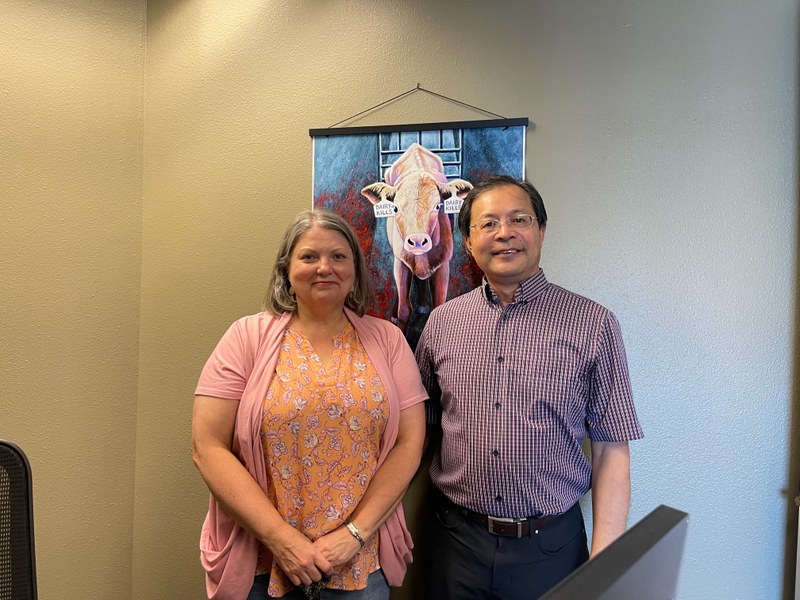
City Animal Welfare Department, UNM College of Nursing Celebrate Research Findings
Novel initiative used tissues from spay and neuter clinics for research study of microplastics and male reproduction.
ALBUQUERQUE – In November 2022, when District 7 City Councilor Tammy Fiebelkorn sponsored Council resolution R-22-73 she knew that the resolution would safeguard against live animals becoming part of scientific research. In just one and a half years after the measure was enacted, a UNM research study utilizing the animal tissues provided by Albuquerque Animal Welfare Department has been released.
UNM College of Nursing Research Department submitted the journal article titled “Microplastic presence in dog and human testis and its potential association with sperm count and weights of testis and epididymis.” The research was conducted by UNM College of Nursing’s Dr. Xiaozhong Yu and was published in May by Oxford University Press on behalf of the Society of Toxicology. The journal abstract states the study sought “to quantify and characterize the prevalence and composition of microplastics within both canine and human testes and investigate potential associations with the sperm count, and weights of testis and epididymis.”
“The study concluded that the presence of microplastics in the testes of male dogs and male humans is pervasive,” said Councilor Fiebelkorn. “The tissues collected as a result of our resolution provided Dr. Yu and the researchers at UNM Nursing with the live tissue samples they needed for their research. All without subjecting dogs and other animals to the unnecessary live testing methods too often used to collect samples for scientific research.”
According to the results of the study, microplastic presence found in the male reproductive tissues collected indicated levels that could affect male fertility in both humans and dogs.
“Our findings point the way for additional research to understand how microplastics might affect sperm production in the testes,” said Dr. Yu. “We have a lot of unknowns. We need to really look at the potential long-term effect. Are microplastics one of the factors contributing to this decline?”
Public interest in the topic has been notable, with more than 350 news outlets reporting the research results, including NPR, CNN, and the LA Times. In the journal article, Dr. Yu gave special thanks to the City of Albuquerque City Councilor Tammy Fiebelkorn, CABQ Animal Welfare Department, Dr. Erin Clarke and team, the Sandia Animal Clinic, and the Kokopelli Animal Clinic.
“Animal Welfare staff at our spay and neuter clinics are glad to be partners at reducing unnecessary animal testing,” said Director of Animal Welfare Department, Carolyn Ortega. “We hope that the fertility research at UNM is the first of many. We look forward to ways AWD can assist in future scientific research projects.”
The resolution passed by City Council created the tissue donation agreement between The City of Albuquerque Animal Welfare Department’s Spay and Neuter Program and the UNM Science Center College of Nursing for the express purpose of biomedical research. The measure made use of reproductive tissues that otherwise would have been destroyed.

